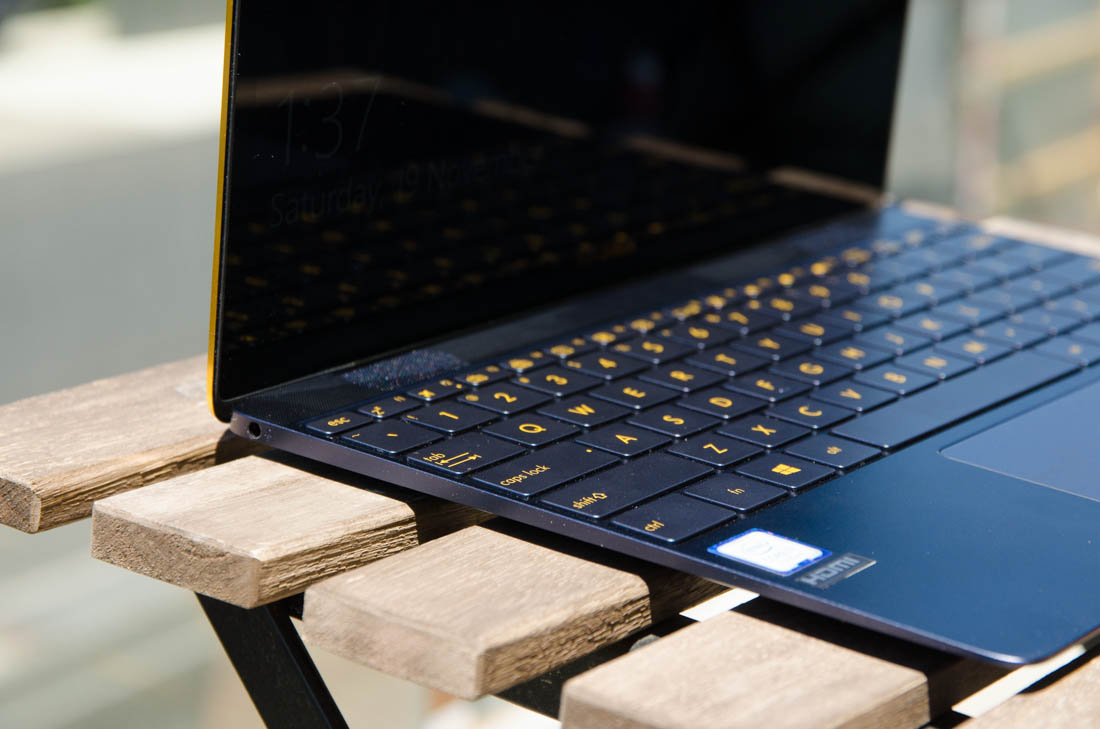Asus ZenBook 3 Review - welchtharme
Laptop computer manufacturers are stock-still striving for the thinnest and lightest products they pot develop. Apple has been the loss leader in this market for some time, producing utmost quality designs like the MacBook, but concluded the past year we've seen PC manufacturers connect the party in a significant way. Just a few months agone I was reviewing the attractive Horsepower Spectre, which was surprisingly clean for a laptop so thin.
Over the past few weeks I've been testing Asus' competitor in this place, the ZenBook 3. Of altogether the ultrathin laptops I've reviewed, the ZenBook is well-nig like Apple's MacBook from a design perspective. It packs a 12.5-inch display, an border-to-edge keyboard, and a single USB-C larboard for charging and all connectivity.
Where the ZenBook pulls away from Malus pumila's ultraportable is on the inside. Piece the circulating MacBook packs an Intel 'Skylake' Sum M processor, the ZenBook uses a current-generation, overfull-powered 'Kaby Lake' Core i5/i7 CPU. The functioning difference between Core M and Core group i7 is meaningful, and allows the ZenBook to deal with more tasks simultaneously.
The ZenBook 3 is sure enough impressive from a design perspective. The entire laptop is 11.9mm light and 910 grams threatening, which makes it slightly thicker than the HP Spectre but a good 200 grams lighter. Information technology's more closely matched with the current MacBook, and no doubt Asus is celebrating the same slight size and weight advantage over Apple's offering.
As soon equally I unboxed the ZenBook 3, I was impressed with its portability. The lightweight build is especially impressive, flatbottomed more so than the extreme thinness.

The footprint of the ZenBook isn't significantly little than my Dell XPS 13 – partly because the ZenBook packs larger bezels around its smaller display – however it's a dance step up in portability purely because it's then slim and light.
Asus hasn't skimped on build quality, as an alternative giving the ZenBook 3 the most impressive purpose I've seen from the company. The metal unibody both looks and feels excellent, and I'm a Brobdingnagian lover of the blue finish with gold trim. The glossy finish to the presentation, while not a touchscreen, helps complete the premium, expensive vibration you get from viewing and holding the laptop computer. The circular brushed finish to the lid is a nice touch besides, A it retains ane of Asus' more familiar designing elements.

For the most part, though, the ZenBook is clearly glorious by the MacBook. The submarine design, the curved abut around the chapeau, the border-to-edge keyboard, the hinge, and even the cutout below the trackpad are all features ripped directly from Apple's laptop. That's not a bad affair, as the MacBook is a beautiful piece of hardware, only Asus should be careful there.

Above the large keyboard are two defined speaker grills, which operate tandem with two additional bottom firing speakers for a "straining-liberal, movie theater-superior" experience, according to Asus. I wouldn't describe the ZenBook's audio Eastern Samoa movie house upper-class, but the Harman Kardon-enhanced speakers are decent calibre and provide a lot of volume. With that aforementioned, the speakers do lack bass, making them more suited to picture than audio frequency.

One of the more interesting aspects to the ZenBook 3 is the integrated fingerprint sensor, which supports Windows Howdy. Rather than placing the sensing element near the power button, which makes the virtually sense, Asus has strangely chucked it in the high right corner of the trackpad. While the sensing element is amenable and great for security, its placement is awkward and occasionally impacts the usability of the trackpad.
For or s inexplicable reason, Asus definite to replicate the MacBook's several USB Type-C embrasure.
I Don River't understand why the ZenBook 3 had to have upright a single USB left, when there is comfortably enough space along the edges for a second operating theater even fractional port. The ZenBook's single USB-C port does not support Thunderbolt 3, and you'll need to load up on dongles to consumption this laptop with multiple peripherals. You'll also struggle to charge the laptop and plug in a USB twist at the same metre without a hub of just about sort. The ZenBook 3 is in spades a production for those well-heeled with #donglelife.

Oh, and I tried 2 basic USB-C to -A adapters and both didn't process the ZenBook 3, which was frustrating. This is wherefore I prefer not to use dongles wherever possible.
Ideal laptops pack multiple wide-cut-sized USB-A ports, but obviously on the ZenBook 3 this is not come-at-able overdue to its tenuity. The succeeding best thing is multiple USB-C ports, so it's disappointing that Asus couldn't even manage that. Merely hey, you capture a 3.5mm headphone jack, besides, so at to the lowest degree that's something.

It's also valuable mentioning that the ZenBook's blue conception is a fingerprint attracter, in particular on the lid, which has received a glossy finish. It might be a good idea to buy a couple of cleaning cloths along with the ZenBook to ensure its finish remains in pristine condition.
Source: https://www.techspot.com/review/1284-asus-zenbook-3/
Posted by: welchtharme.blogspot.com


0 Response to "Asus ZenBook 3 Review - welchtharme"
Post a Comment